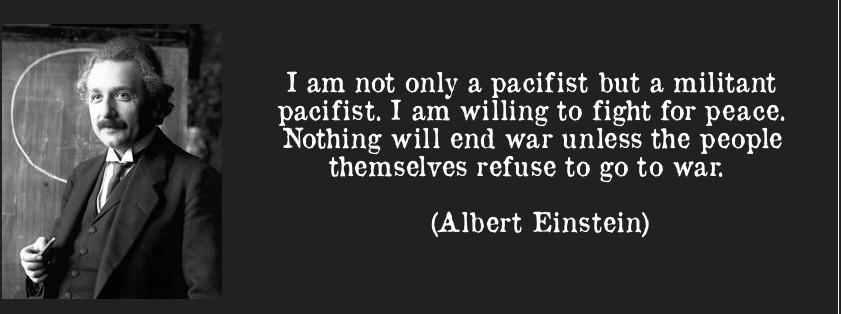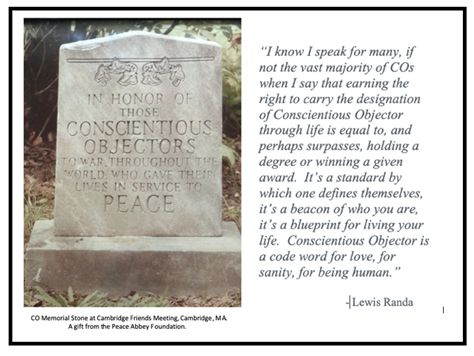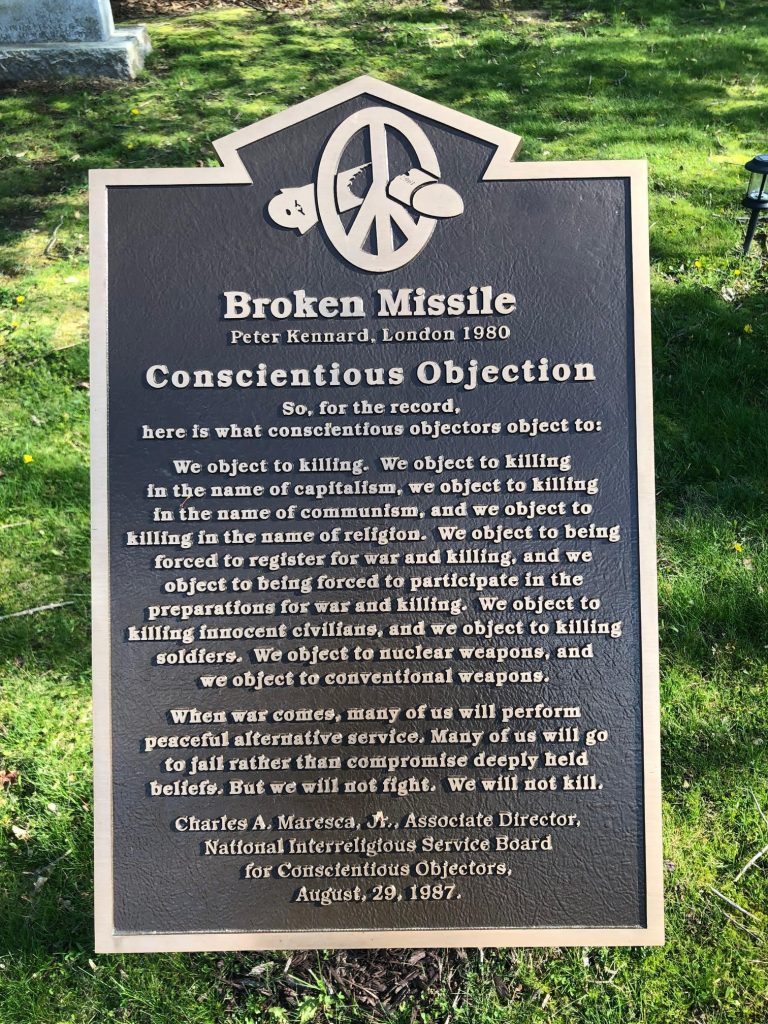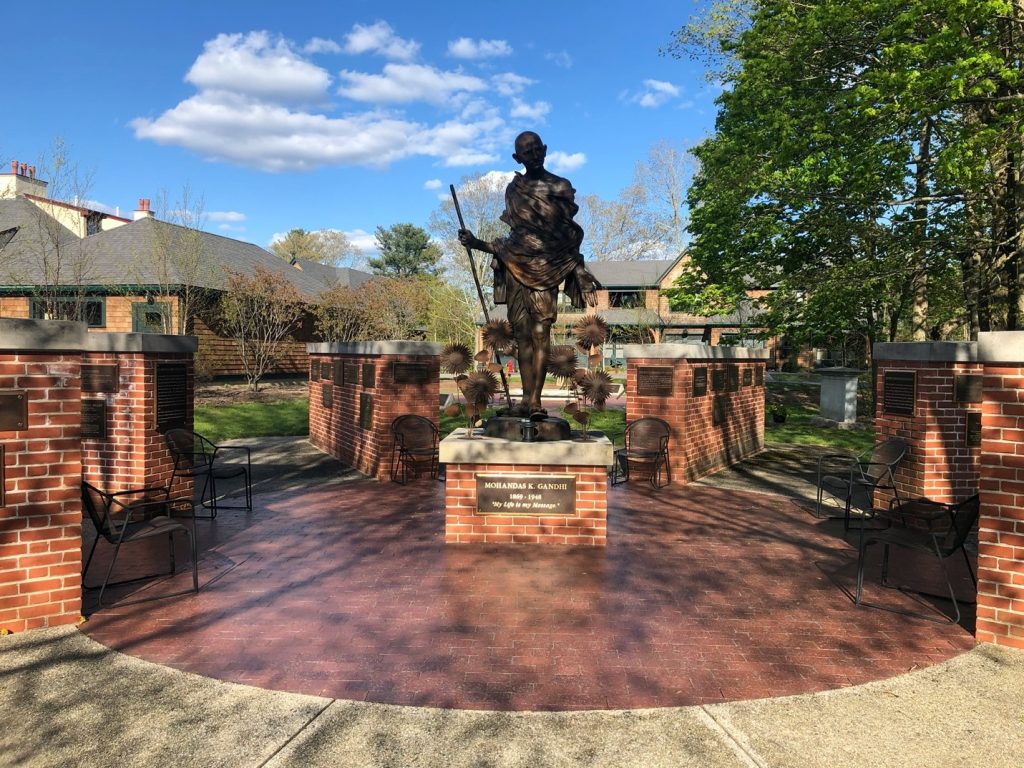

May 15 is International Conscientious Objectors Day. Although conscientious objection to war is not a hot media topic today, respect, admiration, and appreciation for conscientious objectors (COs) will be expressed (mostly distally) around the world this Friday May 15; see here, for example.
The Peace Abbey, in Sherborn, MA, maintains a site that provides numerous materials regarding concientious objection, including historical information, a copy of the National Registry form , and a rich discussion of pacifism, reprinted here:
“Pacifism is opposition to war and violence. The word pacifism was coined by the French peace campaigner Émile Arnaud (1864–1921) and adopted by other peace activists at the tenth Universal Peace Congress in Glasgow in 1901. A related term is ahimsa (to do no harm), which is a core philosophy in Buddhism, Jainism, and Hinduism. While modern connotations are recent, having been explicated since the 19th century, ancient references abound.
In Christianity, Jesus Christ‘s injunction to “love your enemies” and asking for forgiveness for his crucifiers “for they know not what they do” have been interpreted as calling for pacifism. In modern times, interest was revived by Leo Tolstoy in his late works, particularly in The Kingdom of God Is Within You. Mohandas Gandhi (1869–1948) propounded the practice of steadfast nonviolent opposition which he called “satyagraha“, instrumental in its role in the Indian Independence Movement. Its effectiveness served as inspiration to Martin Luther King Jr., James Lawson, James Bevel,[2] Thich Nhat Hanh[3] and many others in the 1950s and 1960s American Civil Rights Movement. Pacifism was widely associated with the much publicized image of Tiananmen Square Protests of 1989 with the “Tank Man“, where one protester stood in nonviolent opposition to a column of tanks.
Pacifism covers a spectrum of views, including the belief that international disputes can and should be peacefully resolved, calls for the abolition of the institutions of the military and war, opposition to any organization of society through governmental force (anarchist or libertarian pacifism), rejection of the use of physical violence to obtain political, economic or social goals, the obliteration of force, and opposition to violence under any circumstance, even defence of self and others. Historians of pacifism Peter Brock and Thomas Paul Socknat define pacifism “in the sense generally accepted in English-speaking areas” as “an unconditional rejection of all forms of warfare”.[4] Philosopher Jenny Teichman defines the main form of pacifism as “anti-warism”, the rejection of all forms of warfare.[5] Teichman’s beliefs have been summarized by Brian Orend as …’A pacifist rejects war and believes there are no moral grounds which can justify resorting to war. War, for the pacifist, is always wrong.’ In a sense the philosophy is based on the idea that the ends do not justify the means.[6]“


_____________________________________________

Lewis Randa is a Quaker, pacifist, vegan, educator, and social change activist. He received an honorable discharge as a conscientious objector from the US military during the Vietnam War in 1971. Lewis is the founder and director of The Life Experience School for children with disabilities (1972); The Peace Abbey, an Interfaith Center for the study and practice of Nonviolence and Pacifism (1988); The Special Peace Corps., an organization that provides community service programs for adults with mental challenges (1990); The Courage of Conscience Award, an international peace award for nonviolent contributions to peace and justice (1991); The National Registry for Conscientious Objection, a register for people of all ages to publicly state their refusal to participate in armed conflict (1992); The Pacifist Memorial, a national monument honoring pacifists throughout history (1994); The Veganpeace Animal Sanctuary, a safe haven for animals that have escaped from slaughterhouses following the rescue of Emily the Cow (1995); Stonewalk, a global peace walk that involves physically pulling a two-ton memorial stone for Unknown Civilians Killed in War (Documentary shown on PBS) (1999 – 2005); Citycare, an empowerment program for the homeless (2000); R.A.T.C., the college-based Reserve Activist Training Corps; and The Lavender House, a Group Home for adults with disabilities (2002).